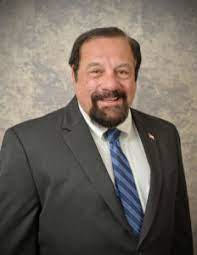Norfolk County, Massachusetts
resource sharing for an equitable future
With top-rated schools, a prosperous economy, and a steady influx of new business investment, Norfolk County is poised for growth
Bordered by Massachusetts Bay to the northeast and Rhode Island to the southwest, Norfolk County (pop. 800,000) consists of more than two dozen communities clustered around Boston. It is notably famous for being the birthplace of four U.S. Presidents and, as such, is duly dignified with the moniker ‘County of Presidents. Like so many places in the state that have standing links to sister communities in the United Kingdom, Norfolk is also twinned by an English county of the same name, combining traditions of the past with the spirit of the future.
“Norfolk is made up of 28 cities and towns varying in size, histories, and forms of governance,” notes County Director John Cronin.
“These communities have roots that extend hundreds of years to our colonial days, and the richness of our history is really driven by industry which, in the beginning, spanned mills, agriculture, and manufacturing. More recently, however, you can see the diversity of economies in our region, particularly in places like Quincy, a coastal city with a long shipbuilding history that became home to a booming immigrant population,” he adds. “We like to think that each community brings forth its own identity. We also try to emphasize the benefits of regionalized governance and management in laying out a vision to save taxpayers’ money and deliver quality services.”
Ranking among the healthiest in the country last year alongside neighboring Nantucket and Middlesex Counties, Norfolk shines brightest in categories such as Education, Economy, and Population Health. “I’m going to sound prejudiced since I’m a resident of Canton in Norfolk County, but I’ve always felt—and as a Commissioner, now feel even stronger—that Norfolk County is one of the best counties in the state,” shares County Commissioner Richard Staiti.

Commissioner Joseph Shea – Chairman
“It’s well run, it’s well governed, and we have a very strong leadership representation at the State House in the form of our Speaker, Ron Mariano. We have a strong legislative delegation, both at the state and federal levels. We are open to new ideas and always investigating ways for our county to assist and enable local government as well. The other reason it’s top-notch is that we offer a diversity of recreational attractions, from our Norfolk Golf Club to our Wollaston Recreational Facility.”
In addition, Norfolk County offers a wide range of recreational opportunities from golf to pickleball at our Wollaston Recreational Facility in Quincy, MA.
The Norfolk Golf Club is a private golf club described as a ‘hidden jewel’ of historic Eastern Massachusetts. Founded in 1896, the nine-hole course is consistently one of the best conditions in the Greater Boston area, and its membership takes pride in being informal, friendly, and inviting. The county’s highly regarded Wollaston facility and Presidents Golf Course are also near Boston, minutes off the Southeast Expressway. The 18-hole President’s city course is situated on 93 acres and offers dramatic views of the Boston skyline, Neponset River, and Blue Hills Reservation.
“Years ago, Wollaston was a staid old country club for the wealthy—doctors, lawyers, people like that,” offers Chairman and County Commissioner Joe Shea. “In the 70s, they moved to that brand new facility in the Blue Hills where we’ve kept the pay-and-play rate at $45 which, to golf in the Greater Boston course, is pretty hard to do. We also have 10 tennis courts, which are used morning, noon and night. We even have pickleball courts because we like to keep up with the trends.”
In addition to the golf experience, over half a million dollars have been invested by the Commissioners in the Wollaston property over the last six months to give non-golfers walking trails and a new playground.
For education, the state consistently earns top ranks for its public school system and Norfolk County happens to be home to “The Aggie”, an agricultural high school that uniquely provides an academic and agricultural science vocational experience, with hands-on learning for over 600 students from 28 counties and 40 out-of-county towns. The school is situated on 365 acres in Walpole and offers specialty training in the areas of environmental science, plant science, animal science, and agricultural mechanics.
“The school was actually established by an act of legislature in 1915, opening as a branch of the Weymouth High School a year later,” shares Superintendent Director John Martin. “Buildings were constructed on our current campus starting in 1917. Today, our student body runs roughly 65-34 girls to boys, and a good percentage of our kids go on to two- and four-year universities—upwards of 70% of our graduates. The rest go directly into the workforce, or into the military.”

Commissioner Peter Collins
In addition, the school runs two programs offering students practical experience: an unpaid internship, where kids are placed with a business or organization to learn the tools and crafts of that particular trade, and a paid cooperative arrangement between the school and local employers where students receive extensive vocational instruction on-the-job.
Complimenting those cooperative partnerships is the Massasoit Community College, with campuses in both Canton and Brockton. “One of the programs they offer is Diesel Technology, training technicians to maintain, repair, and overhaul diesel engines and support systems,” Staiti explains. “It’s a perfect match for our students at the Aggie school who may want to pursue a career in the diesel field. There’s a definite need for Diesel Technology Specialists to enter the workforce. That’s just one of several direct examples of a Norfolk County facility stepping in to improve workforce planning.”
Like many communities across the country, Norfolk was the beneficiary of a large federal grant from the U.S. Treasury last year, as provided in the American Rescue Plan Act (APRA). The county was awarded $137M, to be distributed and managed to replace lost public revenue from the economic impacts of the Covid-19 pandemic.
“We built a software model for each community to send their applications in,” highlights Cronin. “As you may know from announcements, applications could fall under one of six categories: economic impact, public health, water and sewer, broadband infrastructure, revenue loss, and premium pay for essential workers. By far, the most common application we’ve received is in water and sewer infrastructure. So, Norfolk County and our Commissioners, including Commissioner Staiti and Chairman Shea and Commissioner Peter Collins, have already signed off on $45M, which has gone to aid approximately 20 communities.”
“These funds have been used in a variety of ways, as reimbursement as well as funding for new projects, to help local industry and our local economies bridge the process between their last economic activity during the pandemic, and getting them where they need to be to be successful going forward.”
To date, Norfolk has doled out more money for economic relief than any other county in the Commonwealth.

Commissioner Richard Staiti
“That means that the towns in our county are benefiting,”Staiti insists. “We’re giving money to Stoughton to build a new public safety facility. We’re giving money to towns to build water treatment facilities. All of those projects are going to bring revenue and create jobs. They’re going to help them get through the problem we’re all facing as a country over the next several years.”
The county hasn’t yet awarded any of the grants to its agricultural school but is currently working with all 28 of its school districts to determine the best blend of grant funding for their needs.
“As Superintendent Martin indicated, the Aggie hosts a beautiful campus on hundreds of acres, and some of their buildings are quite old,” says Cronin. “They’re in need of upgrade and replacement, and there are resources from APRA that could help improve air quality and other features in those facilities. We’ve not yet come around to assessing what the Aggie needs, but we’ll be working with Superintendent Martin over the next several months to identify the best use of funds in the direction of the schools.”
“There are so many areas where this money could be applied, so we really need to be diligent in aligning our priorities,” offers Shea. “I think everyone on the East Coast has to realize that many of these cities were built in the 1800s and there’s no question we have to do something about water and sewer. At the same time, the pandemic has us re-examining issues like public health and improving the general well-being of residents in the Norfolk area. The good news is that with the APRA money, we’ve got a new life, so to speak. Not because we can use that money to run our county, but because it gives us a chance to network closer with our cities and towns.”
“County government, we believe, is the future,” Cronin affirms. “As communities look within—look left and right—it’s not just collaboration they want, but resource sharing. The way these economies work within Massachusetts is they’re very silo-driven. You’ve got large communities like Quincy, which are big economic engines all by themselves, and then you have a host of rural towns driven primarily by property taxes. So, anytime you can share the wisdom and resources with those smaller communities, you’re helping them thrive.”
“We’ve got a good diversity in our county,” Cronin concludes. “But I believe the evolution of government is going to include our ability to use our resources equitably.”
“The sky’s the limit,” echoes Commissioner Staiti. “And we’re going to keep the County of Presidents right on top where it belongs.”
AT A GLANCE
Norfolk County, Massachusetts
What: A economically diverse, educationally rich county with economic growth projected
Where: Surrounding Boston in the US state of Massachusetts
Website: https://www.norfolkcounty.org/
PREFERRED VENDORS
Patriot Place – www.patriot-place.com
Patriot Place: A Foxborough Foundation for Economic Development
The first phase of Patriot Place opened in 2008, signifying a major domino in the ongoing evolution of Gillette Stadium and Patriot Place into a foundation for business and economic development in Foxborough, Norfolk County and along the Route 1 corridor.
Now 15 years later marks another integral chapter in this continued growth with Quarter Point, the 1.5 million square foot development planned to host life science labs, commercial office space and limited manufacturing, on the horizon. Nestled equidistant from Boston and Providence, this world-class life sciences hub will build on Patriot Place’s and Foxborough’s existing amenities to bring cutting-edge biotech and life science firms to the Gem of Norfolk County. With unparalleled flexibility to create an efficient and environmentally conscious campus experience, Quarter Point promises to be the next major step in economic development for the region and a significant step in cementing Foxborough and Patriot Place as a leader in the biotech space.
In the more immediate future, 2023 will see the completion of the most dramatic Gillette Stadium improvements since its opening in 2002. This comprehensive $225 million investment is fully funded by the Kraft family and includes the installation of the largest outdoor stadium HD video board in the country, new hospitality and function spaces, a plaza leading into the stadium, enhancements to the signature lighthouse and more. Scheduled for completion prior to the 2023 NFL season, these cutting-edge improvements will keep Gillette Stadium as a destination for the world’s top concerts and sporting events for years to come, continuing to bring business to Foxborough year-round.
Speaking of year-round Foxborough business opportunities, Red Sky Studios, a new film production facility, opened just down the street from Patriot Place and Gillette Stadium in spring 2022. This 135,000 square-foot building features two soundstages and is a new destination to shoot TV shows and movies, with HBO Max’s second season of “Julia” getting the lights, cameras and action underway. Once again, the proximity to Boston, Providence and Patriot Place’s amenities makes this location highly desirable, with more productions slated for the future.
A key part of this current and future economic development for Foxborough, Patriot Place and Gillette Stadium is establishing permanent commuter rail service. Working hand-in-hand with the Town of Foxborough and the MBTA, this goal took a big step forward as weekday commuter rail service returned to Foxboro Station in fall 2022 with a new year-long pilot. Featuring free parking and a commuter-friendly schedule with daily service to and from Boston, Foxboro Station is on the track to success.
The past several years have seen Patriot Place’s footprint expand to include weekday commuter rail service from Foxboro Station, Red Sky Studios and countless more business opportunities in the heart of Norfolk County. We look forward to continuing to work with our essential partners in Foxborough and throughout the region in our shared goal to cement this area as a hub for economic development and a leader in business.



